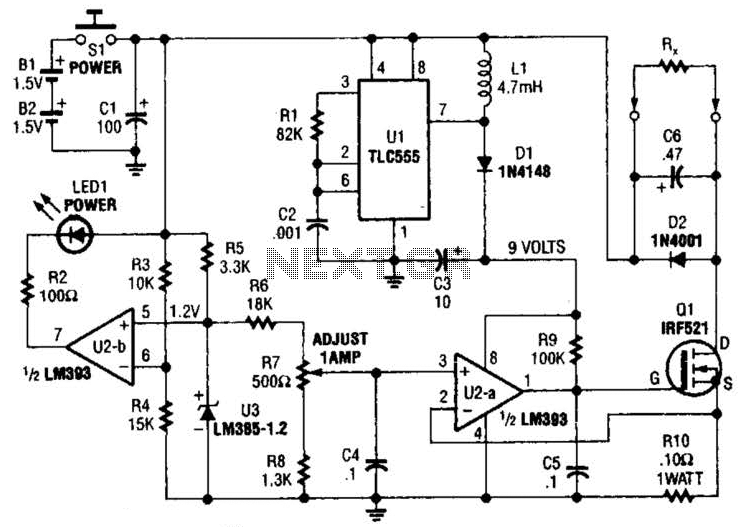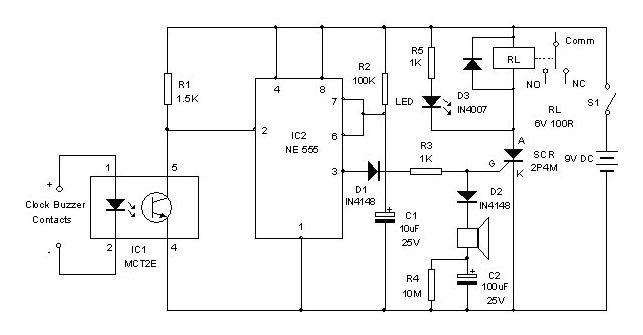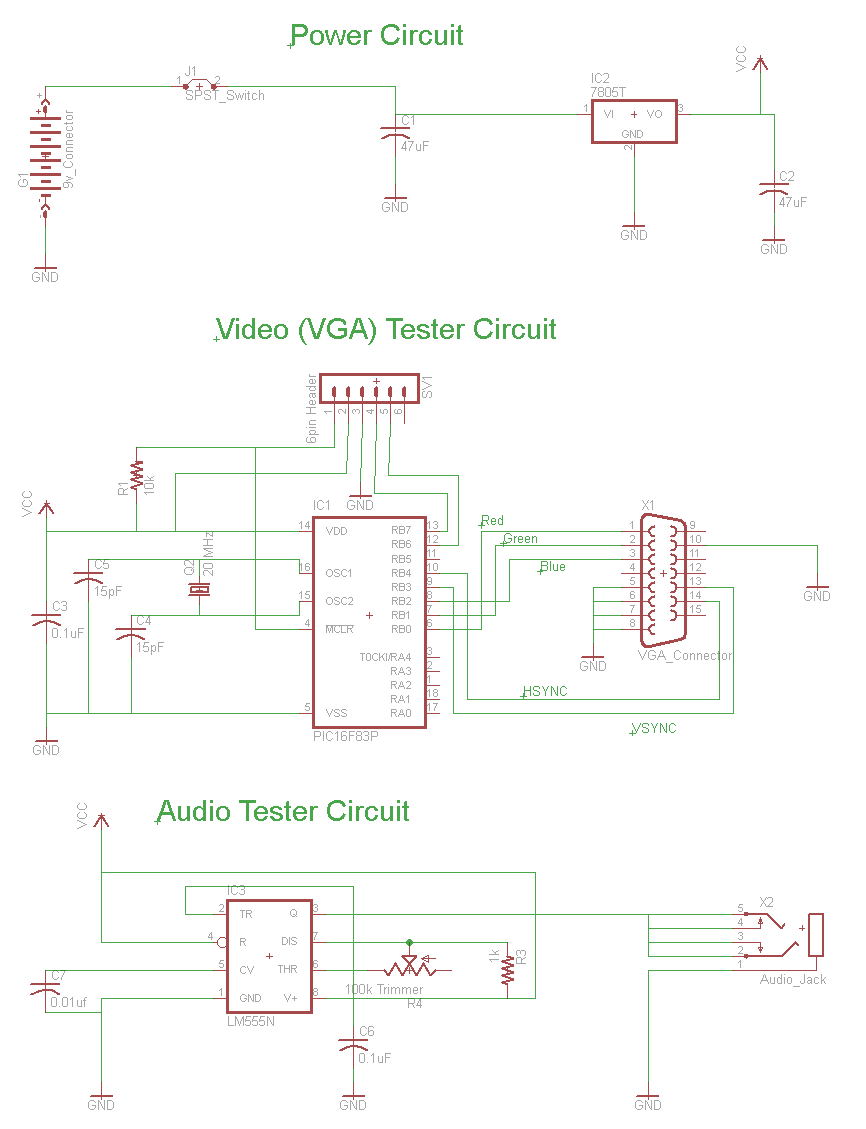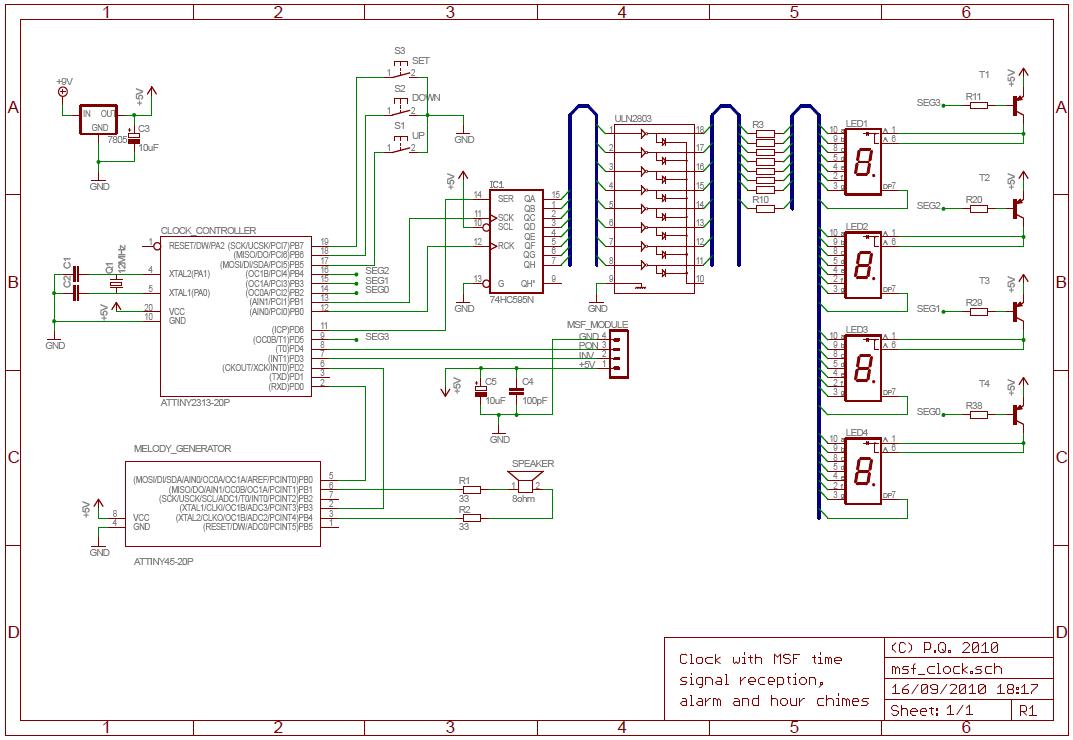
Clock source
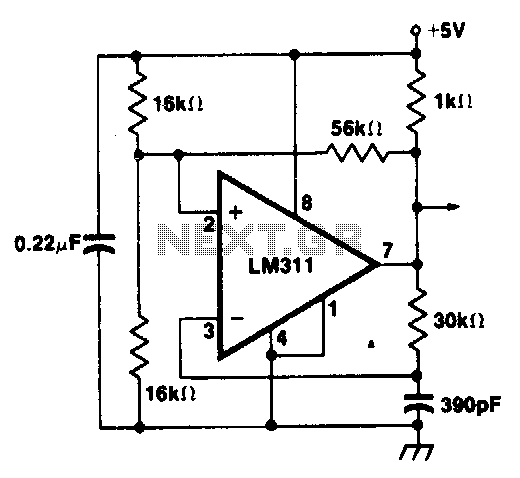
A clock source using the LM311 voltage comparator in positive feedback mode to minimize clock frequency shift problems.
The proposed circuit utilizes the LM311 voltage comparator configured in a positive feedback arrangement to generate a stable clock signal. The LM311 is a high-speed voltage comparator that can operate with a wide range of supply voltages, making it suitable for various applications requiring precise timing signals.
In this configuration, the output of the LM311 is fed back to its non-inverting input through a resistor network, creating a hysteresis effect. This feedback loop helps to stabilize the output frequency and reduces the susceptibility to variations in supply voltage or temperature, which can lead to frequency shifts. The resistor values can be selected to define the threshold levels for the input signal, thus controlling the frequency of oscillation.
To further enhance the performance of the clock source, a capacitor can be added in parallel with the feedback resistor. This capacitor introduces a time delay, which can be adjusted to fine-tune the oscillation frequency. The combination of the resistor and capacitor forms an RC network that determines the charging and discharging time constants, directly influencing the clock period.
For practical implementation, additional components such as decoupling capacitors should be included near the power supply pins of the LM311 to ensure stable operation. Furthermore, output buffering may be necessary if the clock signal is to drive other digital circuits, ensuring that the load does not affect the performance of the clock source.
Overall, this circuit design provides a reliable and efficient method for generating clock signals, suitable for various digital applications, including timers, pulse generators, and clock sources for microcontrollers.A clock source using LM311 voltage comparator in positive feedback mode to minimize clock frequency shift problem.
The proposed circuit utilizes the LM311 voltage comparator configured in a positive feedback arrangement to generate a stable clock signal. The LM311 is a high-speed voltage comparator that can operate with a wide range of supply voltages, making it suitable for various applications requiring precise timing signals.
In this configuration, the output of the LM311 is fed back to its non-inverting input through a resistor network, creating a hysteresis effect. This feedback loop helps to stabilize the output frequency and reduces the susceptibility to variations in supply voltage or temperature, which can lead to frequency shifts. The resistor values can be selected to define the threshold levels for the input signal, thus controlling the frequency of oscillation.
To further enhance the performance of the clock source, a capacitor can be added in parallel with the feedback resistor. This capacitor introduces a time delay, which can be adjusted to fine-tune the oscillation frequency. The combination of the resistor and capacitor forms an RC network that determines the charging and discharging time constants, directly influencing the clock period.
For practical implementation, additional components such as decoupling capacitors should be included near the power supply pins of the LM311 to ensure stable operation. Furthermore, output buffering may be necessary if the clock signal is to drive other digital circuits, ensuring that the load does not affect the performance of the clock source.
Overall, this circuit design provides a reliable and efficient method for generating clock signals, suitable for various digital applications, including timers, pulse generators, and clock sources for microcontrollers.A clock source using LM311 voltage comparator in positive feedback mode to minimize clock frequency shift problem.
